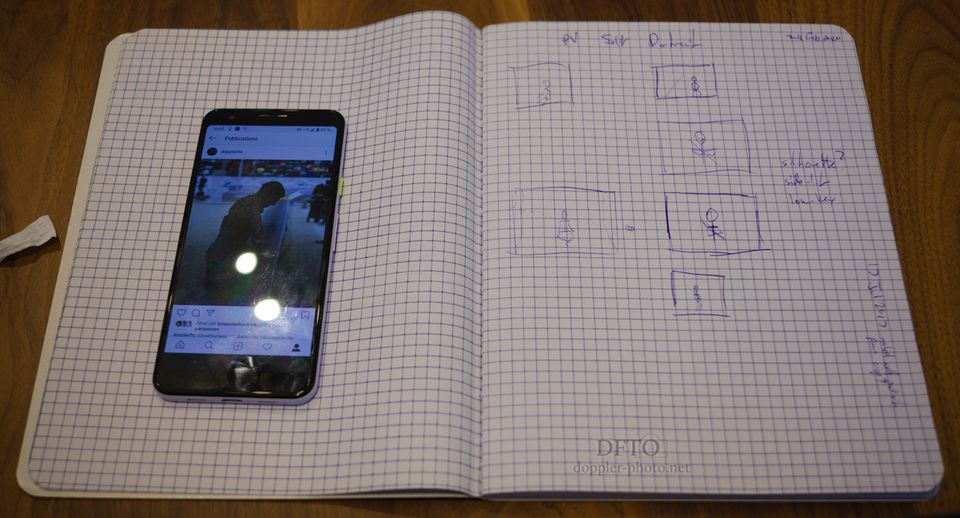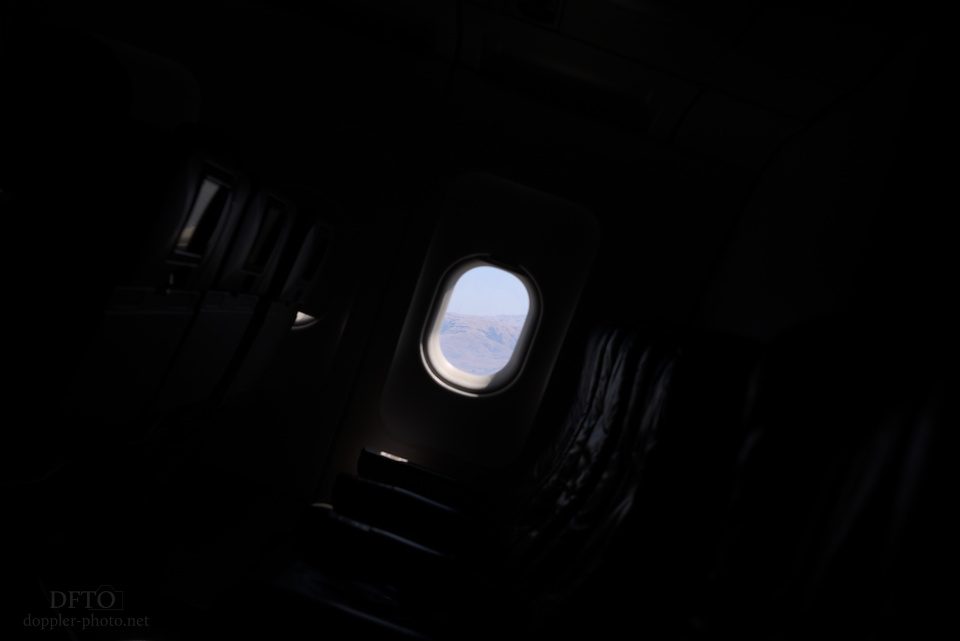
I love to travel. But not like most people do.
One of my favorite things about traveling, and especially by airplane, is the actual experience of being on the plane. Watching the world through a window. Trying to notice how even familiar places and things look somewhat distant and alien through an airplane window. I try to look out the window and take pictures that will somehow explain the thoughts and feelings and curiosities and perspectives that are hiding within myself.
The sequence of images from a flight is as much a record of the changing environment around the plane, as it is a memorial to the way that my attention sometimes flutters from one subject to another, noticing commonalities and differences this time around that I had somehow missed before.
Rain
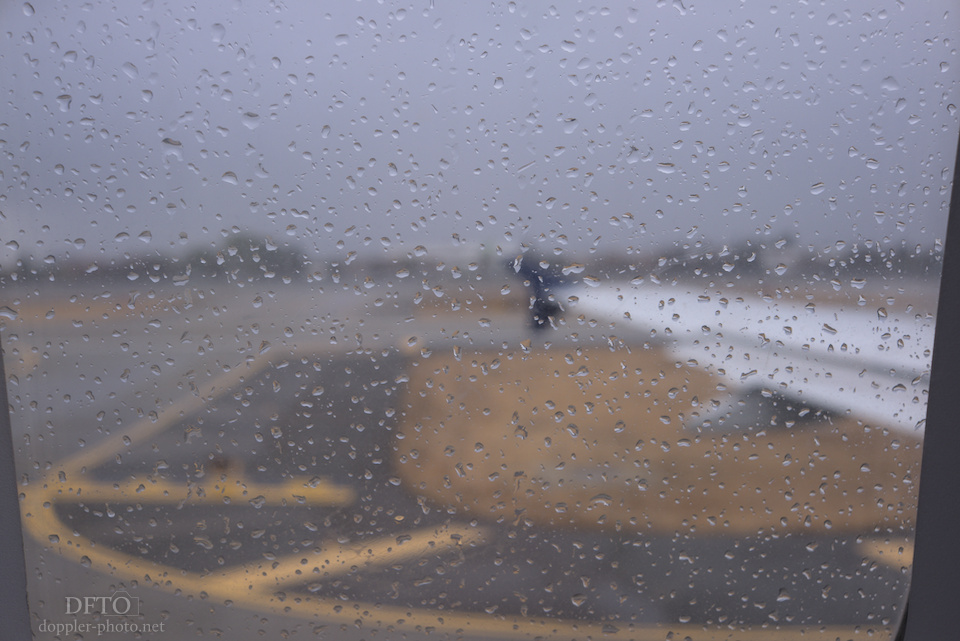
It was raining during a recent flight from Ohio to Utah, which felt kind of appropriate, because there had been some sad things on my mind that were still there. Still on my mind. Watching the pattern of rain on the window reminded me of crying.
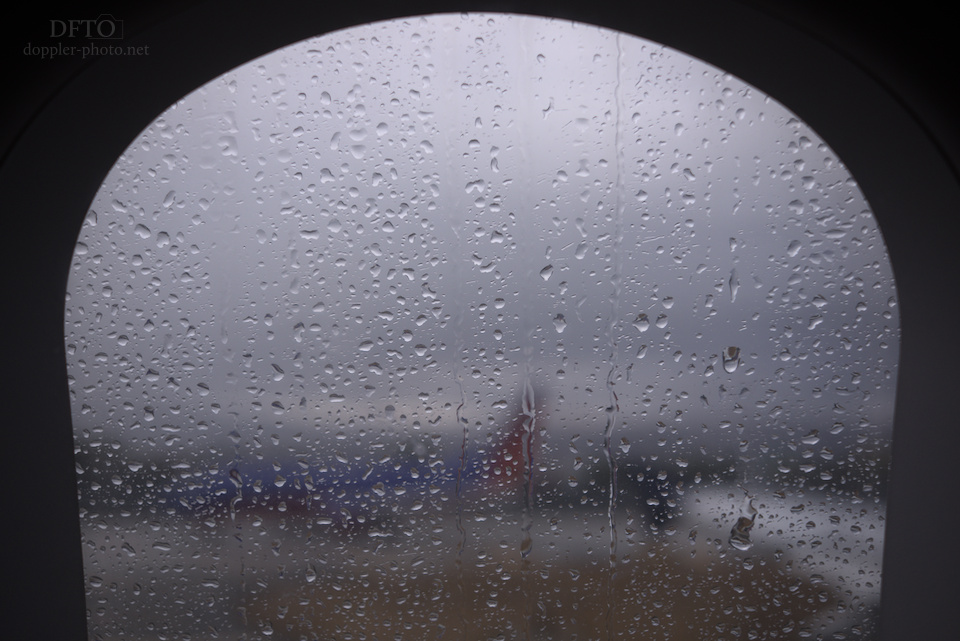
Sometimes when you cry, the tears start off slowly. You can feel them forming little puddles below each of your eyes, and the puddles grow, and grow, and grow, and then they spill over. The streaks start to run down your cheeks. Sometimes that switch to full-blown crying is cathartic. Other times it's just confusing. Sometimes, it feels like I just want to run as fast as I can and leave everything behind.
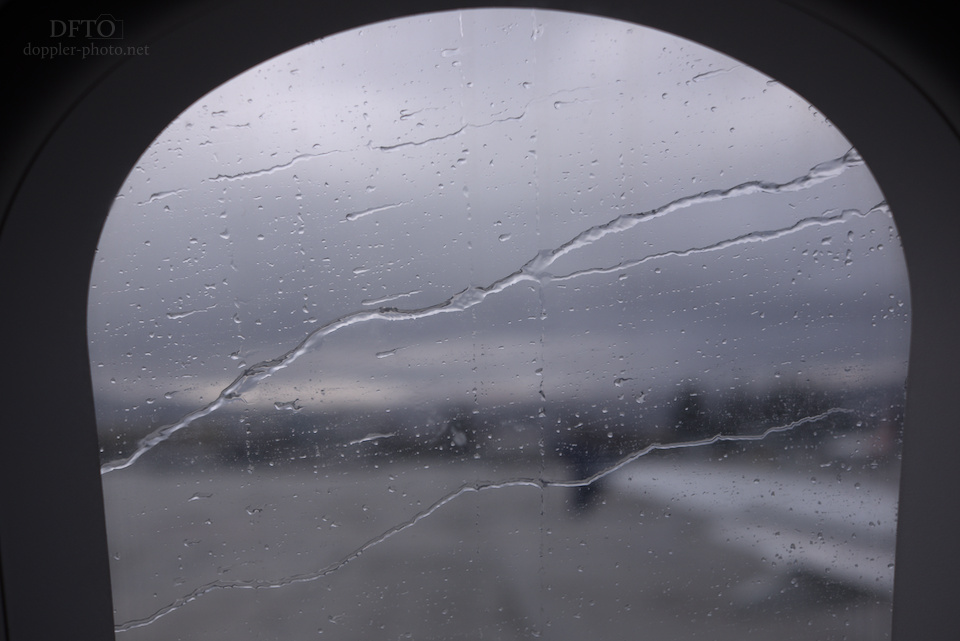
So you start to run. But the tears are still there. You're still crying. The sadness is still there, but at least you're doing something about it, even though you can't really do anything about it. You're still crying, but the movement feels like it helps.
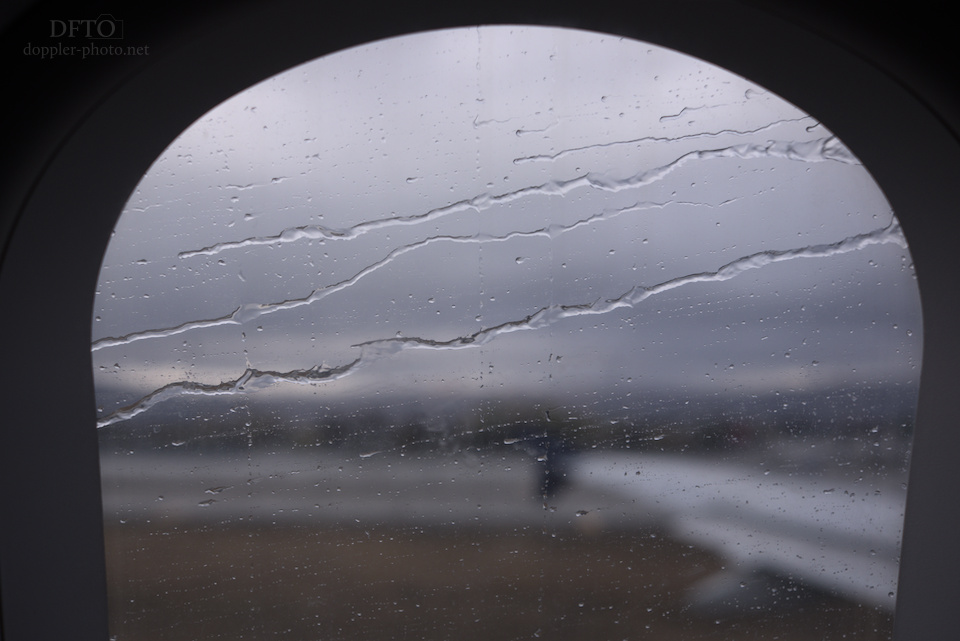
You keep running. You're still crying, but beyond that tear-streaked face, the scenery is changing. The blurriness in your eyes means that you can't see it very well yet, but you know what those colors used to look like, and they're different now. You realize that you still can't see very well yet, but the tears might be starting to dry up. Maybe, just a little.
Is this progress? I mean, who's to say? All I know right now is what it feels like to run
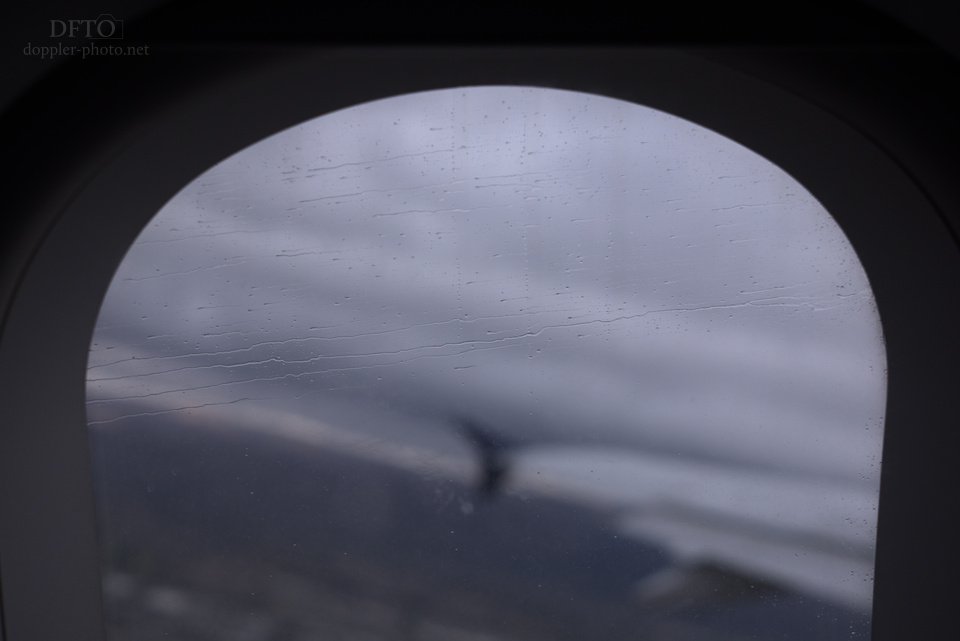
The human body can only generate tears for so long before it needs a break. You're still running. The tears are still there, but it's not anything new anymore; it's only what's left at this point. The world outside is starting to look a little clearer, but all you can tell is that it's a place you no longer really recognize. The cloud of sadness is still there. I mean, it goes as far as the eye can see. But now it's a little bit easier to see that there are things other than just the sadness.
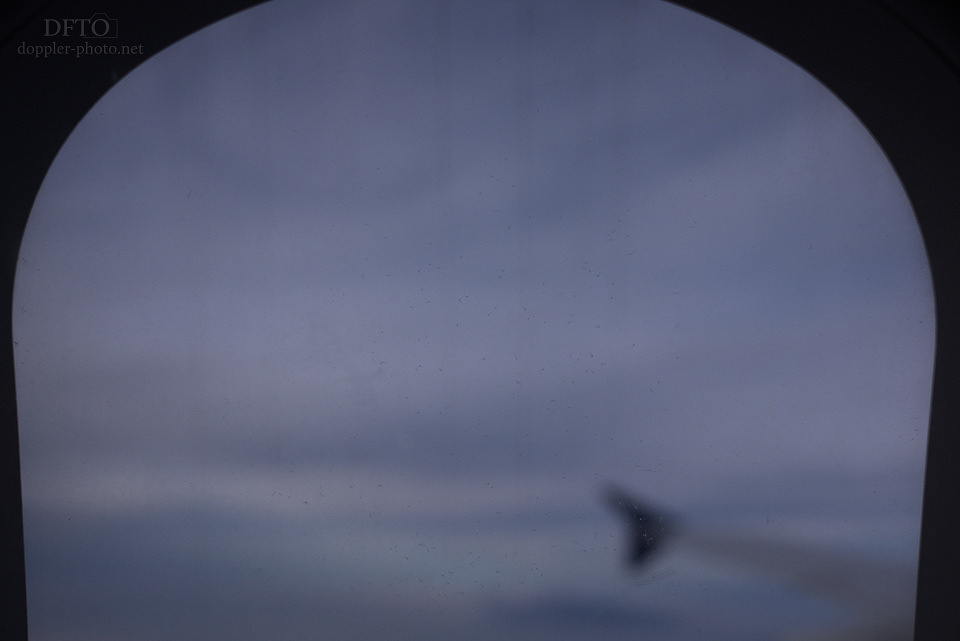
Finally, you're back to an even keel. The sadness is still there, of course, but you feel like you've done something about it. You kind of have, even though you haven't really. Something changed, but it's not the sadness that changed.
The tears leave little, dry crystals on your cheeks that remind you of where you've been, of what you've been through, and of what's still yet to come. You're still running, and the sadness is still there, but at least you survived for a little while.
People
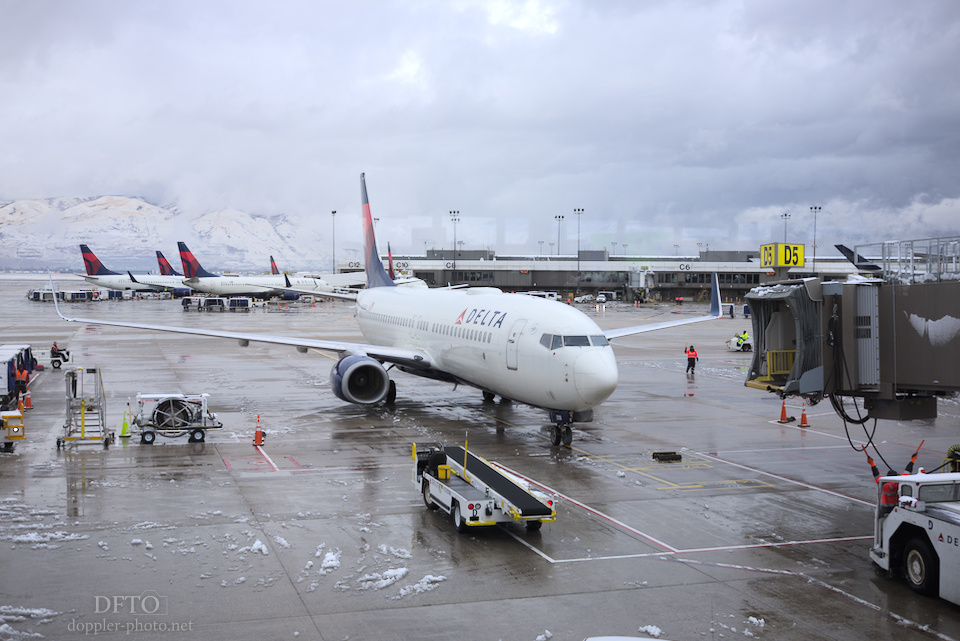
I generally travel to see people. And then once I get back to the airport, I stay curious. It's fascinating how many facets of life are supported by people, and it's equally fascinating how many everyday objects are characterized by the ways that people are supposed to interact with them.
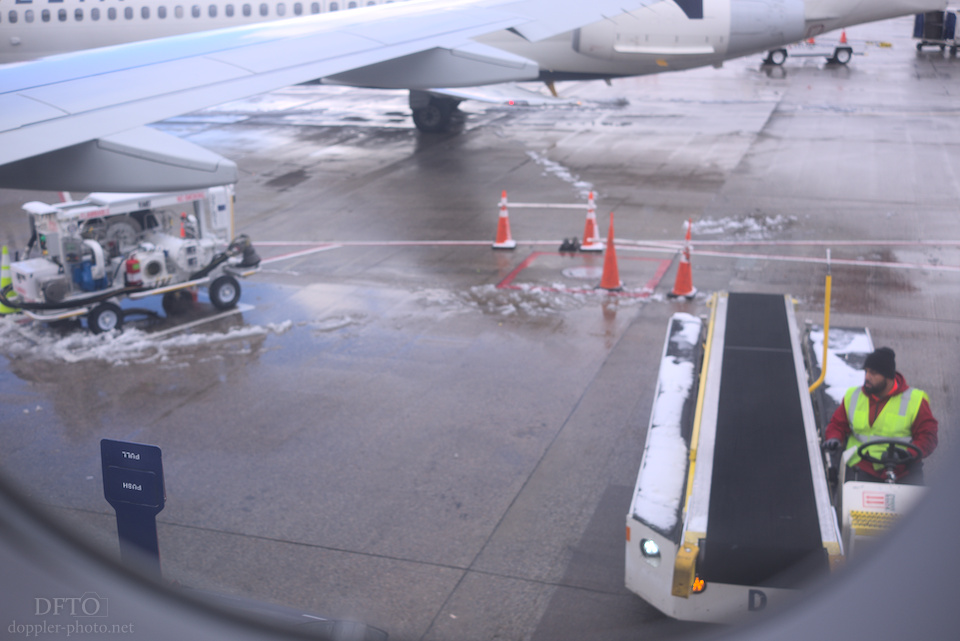
The only precipitation during the second leg of the flight was snow that had already fallen on the Utah tarmac. So I looked around for other secrets that were hiding in the world beyond the window.
The latch for the luggage compartment is one detail that can really make you think. How many different latches have to be built into a modern jet? It's a bunch, right? From manufacturing, to maintenance, to daily operation, there are so many things that a person might need to grab, and so many different ways they might need to grab it. Some of them have to be usable with thick mittens on, others are meant to be operated with a single finger. Some are removable, like tools. Others (like the luggage compartment latch) hide behind a smooth surface, waiting for the right person to push and pull in the right sequence. Yet others are obvious and always apparent.
There are so many latches on a jet, and each one tells you a little story about how a human is meant to interact with the plane.
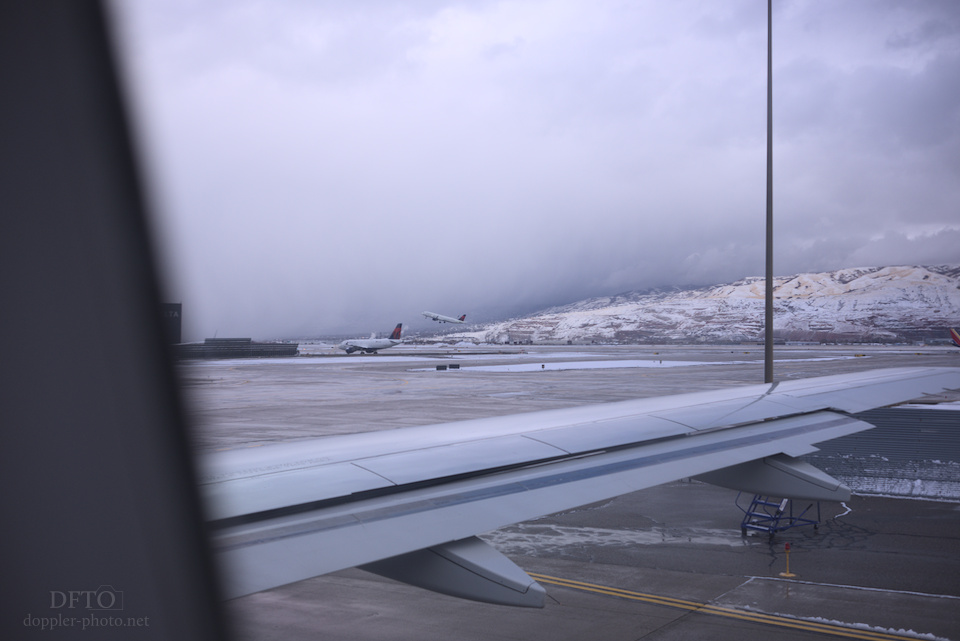
Once we leave the gate and start to taxi, it's easy to think about how small we are, and how far we move, in relation to the world around us. Sometimes I wonder about how our perspectives of mountains and other geographical features have changed over the ages, as it's become gradually easier and easier to get to them and beyond them.

But doing so is still both easy and difficult. It's easy enough as a passenger — you just find a ticket and go. But there's so much difficulty in practice — someone had to devise a chemical that you could spray onto an aircraft that would stay on there despite high speeds and tremendous amounts of wind, so that it would prevent ice from building up on the surface of the aircraft and making control surfaces difficult to operate (or less effective at manipulating the flow of air).
And it's weird. There are a bunch of things in life that are like that. I mean, it's so easy to walk, but imagine having to explain how to walk to someone who had never learned.
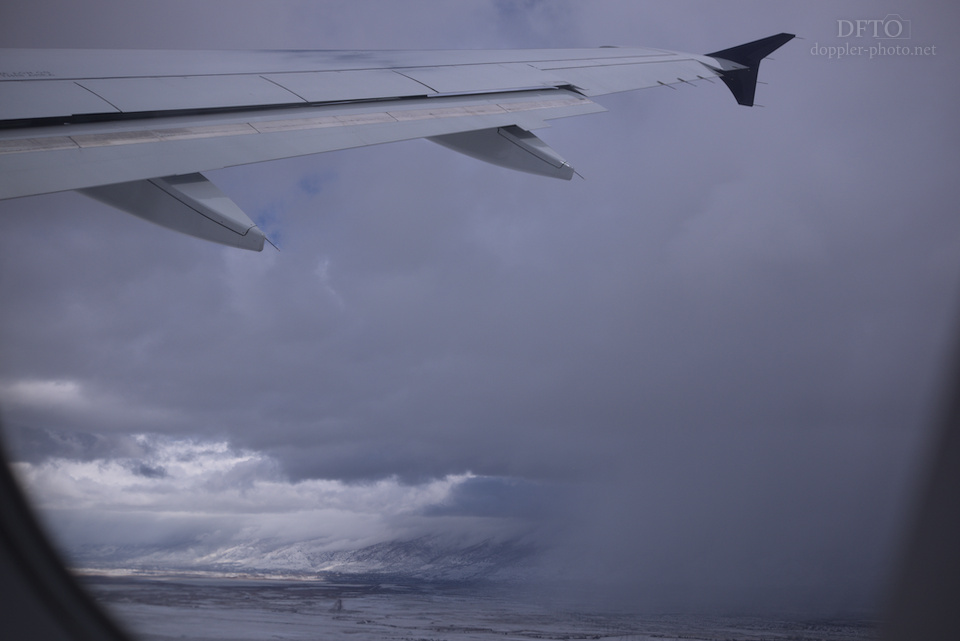
But then you take off and see a mountain range under your wing. No big deal…

You see your shadow on top of a cloud.

And when you land, there's that age-old reminder: people made this happen.
The complete Tunnel Vision series:
- Rain & People
- Colors, Textures, & Lines
- Clouds



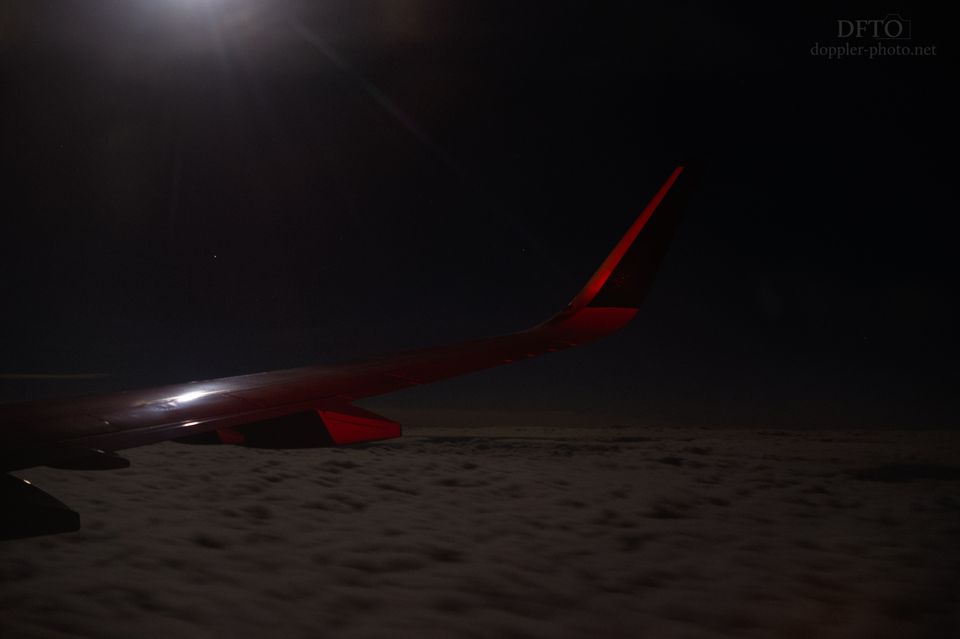
![[Doc Diaries] The Big Leagues](/content/images/size/w960/migrated_images/2021/04/doc-diaries-big-leagues/710_3349.jpg)
